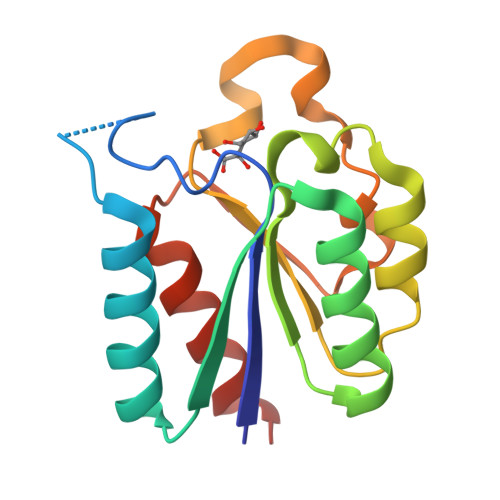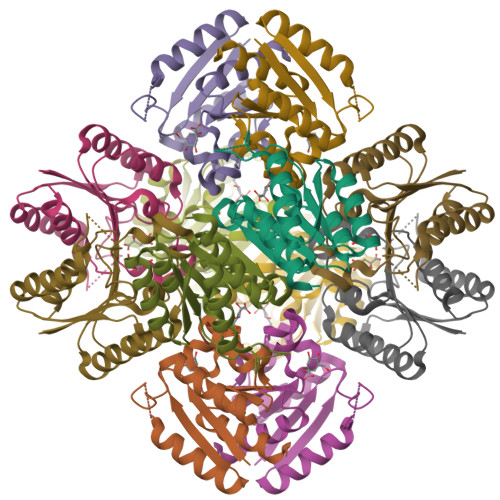Exploring the water-binding pocket of the type II dehydroquinase enzyme in the structure-based design of inhibitors.
Blanco, B., Sedes, A., Peon, A., Otero, J.M., van Raaij, M.J., Thompson, P., Hawkins, A.R., Gonzalez-Bello, C.(2014) J Med Chem 57: 3494-3510
- PubMed: 24689821
- DOI: https://doi.org/10.1021/jm500175z
- Primary Citation of Related Structures:
4CIV, 4CIW, 4CIX, 4CIY - PubMed Abstract:
Structural and computational studies to explore the WAT1 binding pocket in the structure-based design of inhibitors against the type II dehydroquinase (DHQ2) enzyme are reported. The crystal structures of DHQ2 from M. tuberculosis in complex with four of the reported compounds are described. The electrostatic interaction observed between the guanidinium group of the essential arginine and the carboxylate group of one of the inhibitors in the reported crystal structures supports the recently suggested role of this arginine as the residue that triggers the release of the product from the active site. The results of the structural and molecular dynamics simulation studies revealed that the inhibitory potency is favored by promoting interactions with WAT1 and the residues located within this pocket and, more importantly, by avoiding situations where the ligands occupy the WAT1 binding pocket. The new insights can be used to advantage in the structure-based design of inhibitors.
Organizational Affiliation:
Centro Singular de Investigación en Química Biológica y Materiales Moleculares (CIQUS), Universidad de Santiago de Compostela , 15782 Santiago de Compostela, Spain.



















